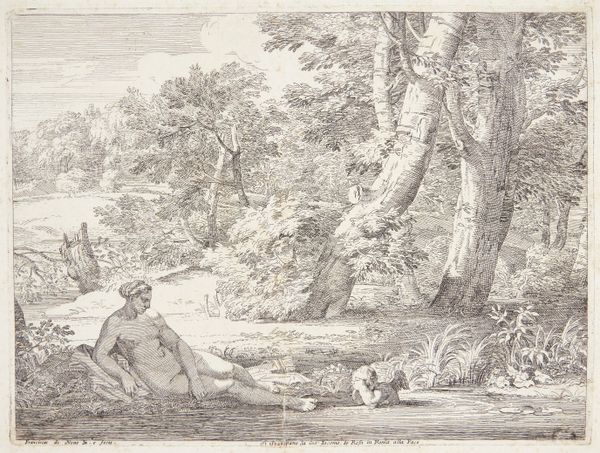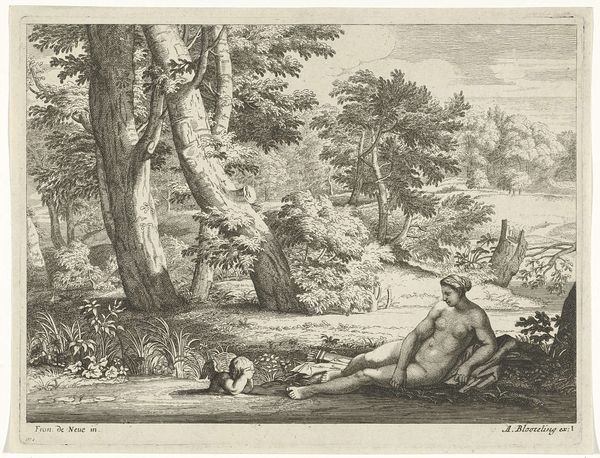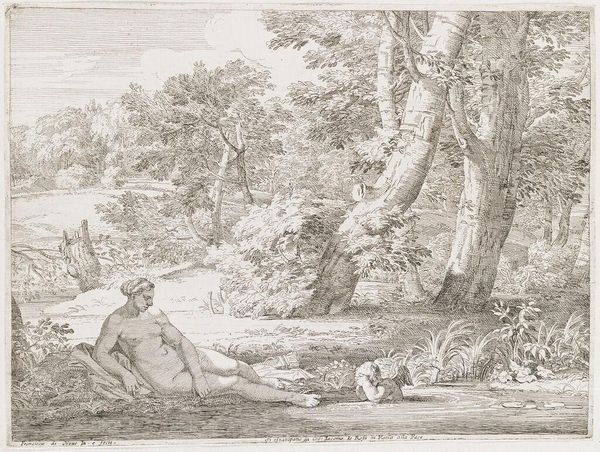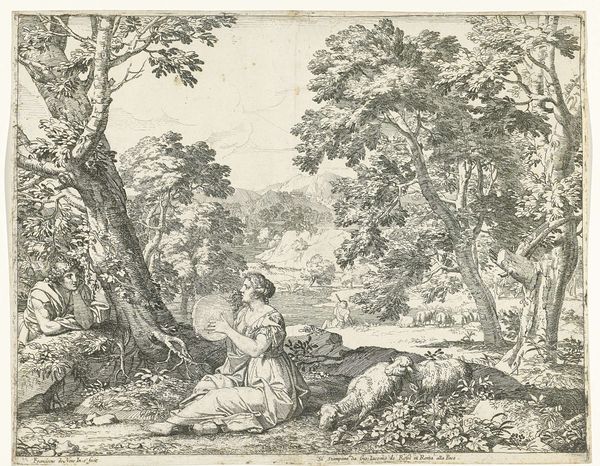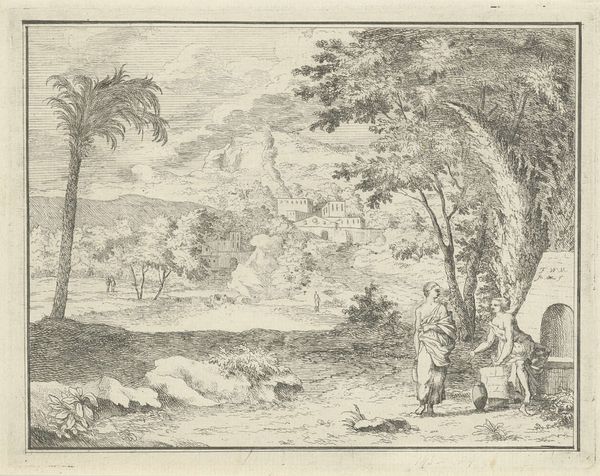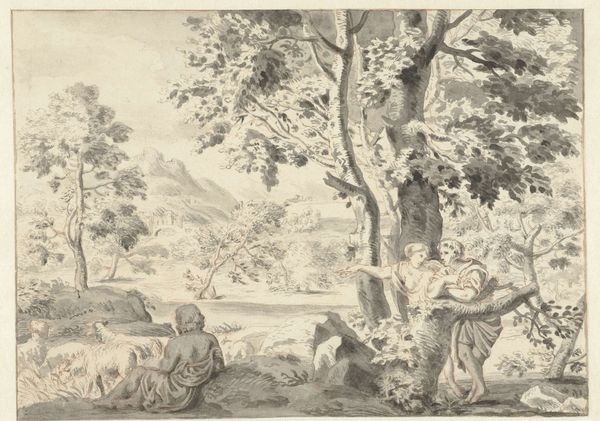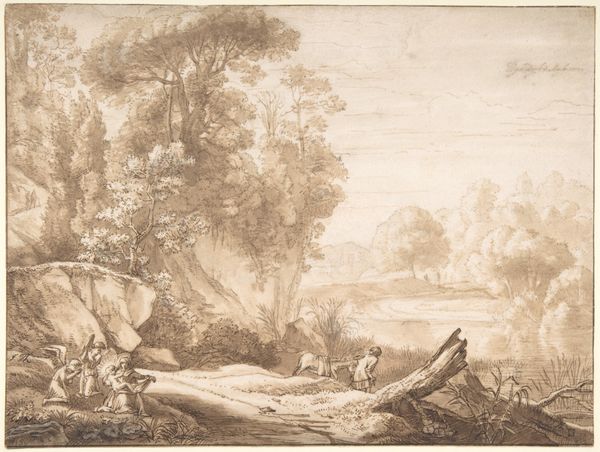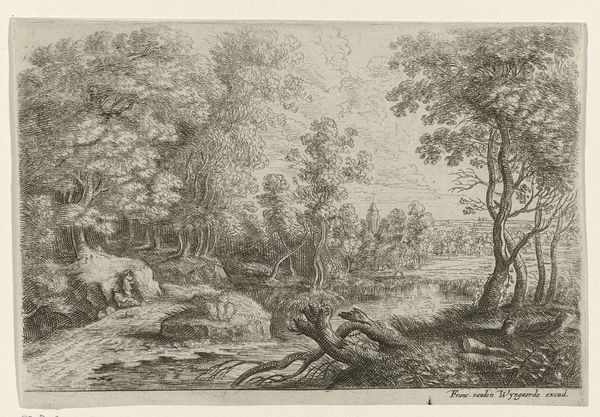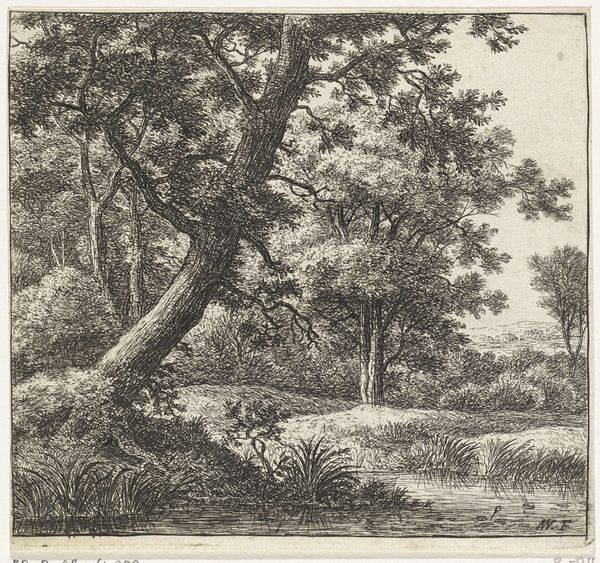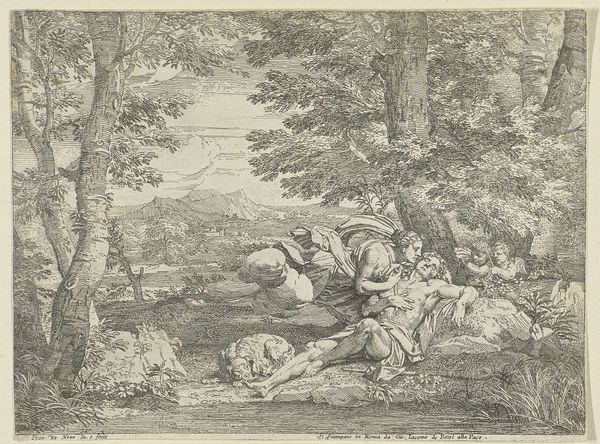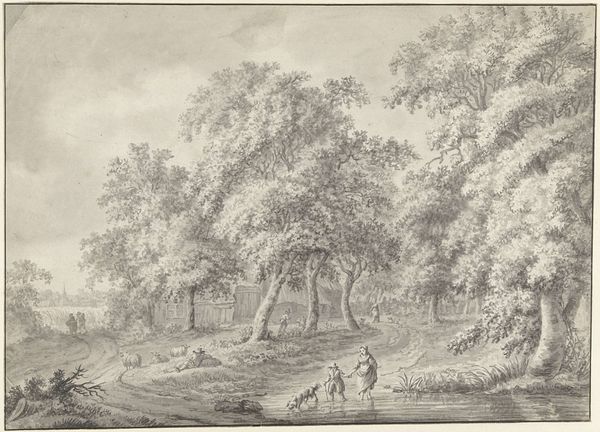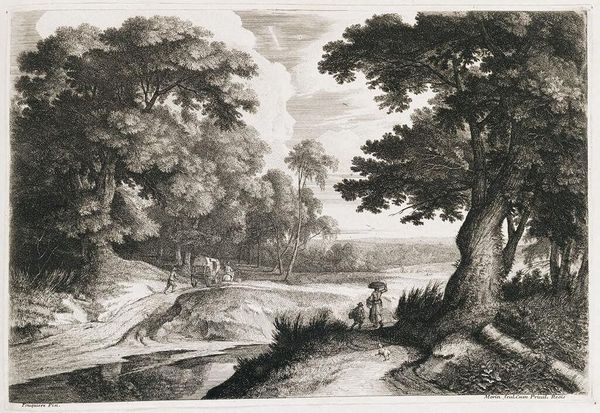
engraving
#
baroque
#
landscape
#
figuration
#
history-painting
#
nude
#
engraving
Dimensions: height 190 mm, width 256 mm
Copyright: Rijks Museum: Open Domain
Curator: Let's take a closer look at this engraving, "Venus and Amor by the Water," created by Franciscus de Neve between 1660 and 1666. It's currently housed in the Rijksmuseum. Editor: The scene strikes me as profoundly isolated. A nude Venus reclines on the riverbank with Cupid at the water’s edge, amidst a rather bleak and barren landscape. Curator: The Baroque period certainly romanticized idealized landscapes. It is a nod to classical mythology within a contemporary artistic lens. Neve’s approach situates itself in the grand tradition of history painting, yet embraces figuration, even the nude form, within these larger narratives. Editor: It's this insertion of the mythic nude into landscape that intrigues me. The female nude has historically served as a site for the projection of male fantasies and power. What narratives are being privileged through this depiction of Venus? And what’s lost? Curator: The engraving reproduces earlier paintings of that time. Consider the power dynamics inherent in representing a goddess this way—who is invited to look, who is reflected, and which systems of desire this reinforces. These reproductions played a vital role in disseminating artistic ideas. Prints, after all, made art accessible. Editor: Yes, and what does this say about the accessibility of the artworld at this period in time? Curator: It's a layered tension, isn't it? Dissemination implies democratization, but the images themselves were coded with elite taste, access, and gendered presumptions about viewership. It invites inquiry into the public role of art and the politics of imagery. Editor: The natural world feels exploited to simply display female beauty as an object. I would ask, is it truly a celebration, or a form of subjugation framed in the context of beauty? The way love itself can often be exploited for control, and this work subtly demonstrates that dynamic. Curator: Thank you. I hadn't thought of the subjugation so bluntly. This intersectional approach broadens how we view artworks, not just as beautiful or masterful, but as encoded sites of cultural exchange. Editor: The complexities surrounding the engraving force me to see how it simultaneously reproduces and challenges these power structures. The dialogue continues.
Comments
No comments
Be the first to comment and join the conversation on the ultimate creative platform.
